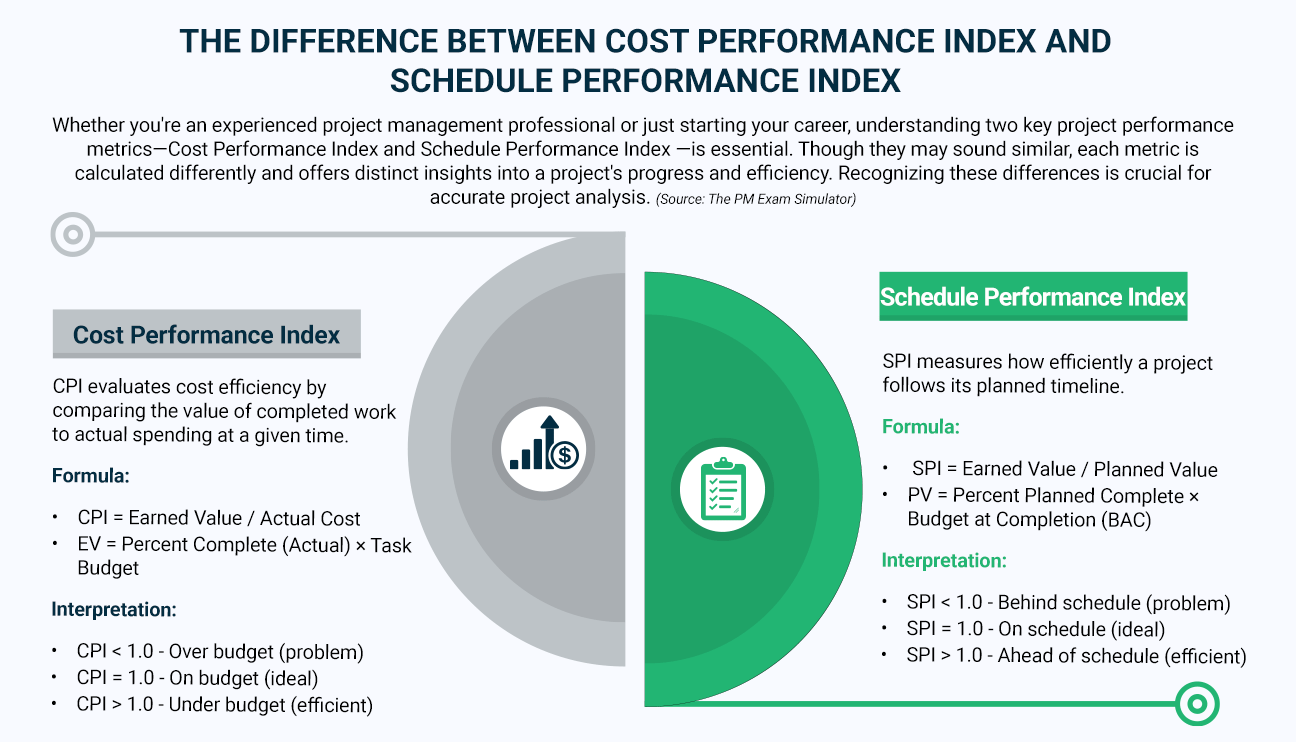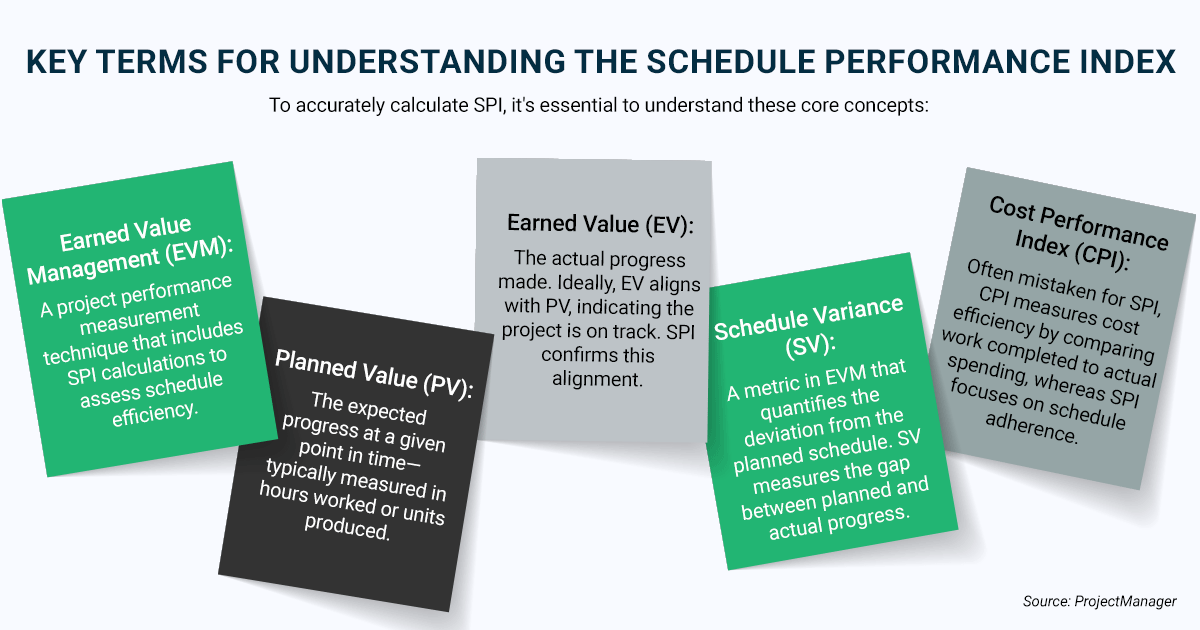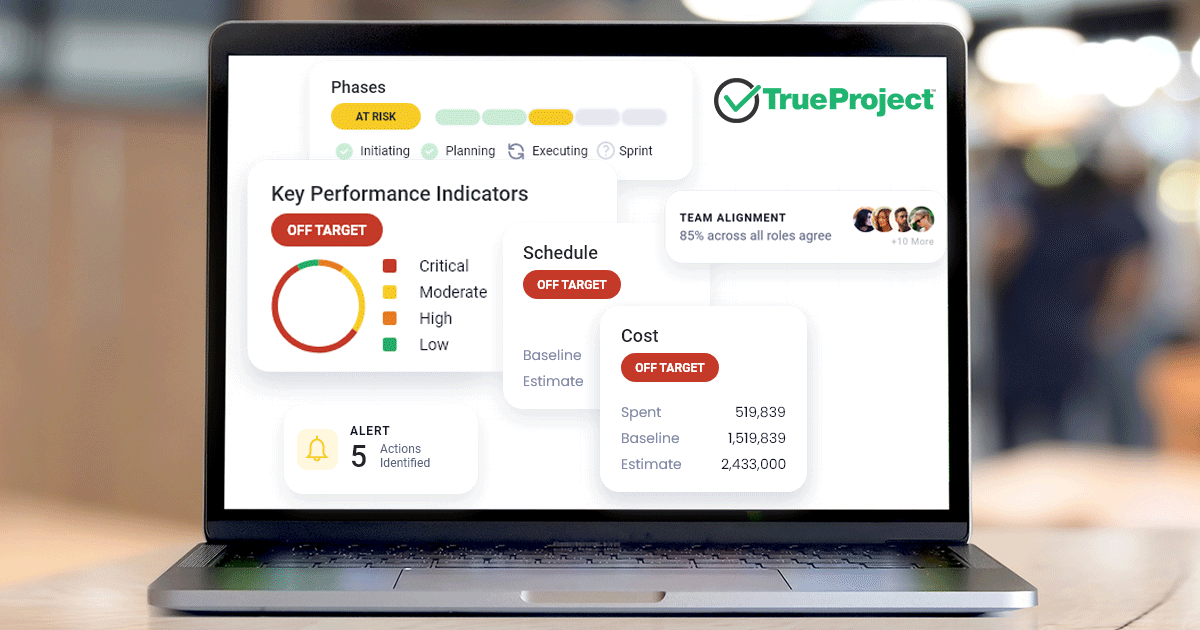
How much value does a day of work really bring? Most would offer vague responses—some, a lot, or not much. But these answers do little to measure real impact. In projects, vague insights lead to poor decisions, making precise evaluation essential. It's a harsh truth—nearly 80% of projects fall short of their goals. The fallout? Wasted time, financial losses, and team frustration. Poor planning, lack of schedule visibility, unrealistic timelines, shifting expectations, and scope creep often fuel these failures. The ripple effect? Cost overruns, resource burnout, and a direct hit on business outcomes.
Delivering projects on time and within budget requires constant monitoring and adjustment. One of the most reliable tools for tracking progress is the Schedule Performance Index (SPI). SPI measures how efficiently a project is progressing against its planned schedule. It removes the guesswork, providing a clear, measurable answer by tracking progress and pinpointing areas for improvement, ensuring maximum efficiency.
But what if you could go beyond just tracking progress? What if you could predict potential project delays before they happen? That’s where the artificial intelligence-powered project management solution comes in. Project managers can assess current performance and forecast future outcomes by combining SPI with advanced predictive analytics.
This article discusses the importance of the Schedule Performance Index (SPI), its calculation, limitations, and how integrating it with predictive analytics can significantly enhance project performance and foresight.
What is the Schedule Performance Index?
The Schedule Performance Index (SPI) is a key metric in earned value management (EVM), measuring project progress with precision. SPI is a simple yet powerful metric that indicates whether a project is on schedule, delayed, or ahead.
Simply put, SPI gauges how closely actual progress aligns with the plan. Deviations signal potential risks, making it essential to monitor and adjust. Project management solutions streamline this process by tracking planned vs. actual data, helping teams stay on course with real-time insights.
It’s calculated by dividing the Earned Value (EV) by the Planned Value (PV):
SPI = EV / PV
- An SPI of 1 means the project is on schedule.
- An SPI greater than 1 indicates the project is ahead of schedule.
- An SPI less than 1 signals the project is behind schedule.
For example, if a project has an EV of 200,000 and a PV of 250,000, the SPI is 0.8. This means the project is only achieving 80% of the planned progress. SPI helps project managers identify delays early, allowing them to take corrective action.
With a clear understanding of the schedule performance index, stakeholders can make data-driven decisions—adjusting resources, refining task durations, or revising timelines. This keeps projects aligned with goals while providing a transparent view of expected completion.

Schedule Performance Index: Why This Metric Matters?
The schedule performance index is critical in evaluating how accurately a project adheres to its planned timeline. By calculating SPI, teams can determine whether a project is progressing as expected or if schedule adjustments are needed. If the SPI indicates delays, it may be necessary to reassess how the schedule was originally structured or implement corrective actions such as allocating resources more effectively, adjusting workloads, or expanding the team to improve efficiency.
One key benefit of SPI is its ability to gauge productivity, offering insight into how much work has been completed relative to the project's timeline. Organizations can enhance their scheduling strategies and improve overall project performance by analyzing this metric. Observing this metric in real-time provides valuable insight into its influence on projects. Data alone holds little significance until it drives decisions that help maintain momentum and keep projects progressing efficiently.
However, SPI alone has limitations—it only reflects past performance. To truly stay ahead, you need a way to predict future performance. That’s where modern technology solutions, like predictive analytics, step in.
Tired of finding project schedule risks after the damage is done? See how top-performing teams use TrueProject’s predictive SPI to course-correct before delays hit. Watch the demo now.

Challenges in the Standard Schedule Performance Index Usage
While SPI is a valuable tool, it’s not without its flaws. A healthy SPI doesn’t guarantee project success. It doesn’t factor in shifting priorities, unexpected risks, resource availability, market shifts, or stakeholder dynamics. A project may appear on schedule while underlying issues build up, waiting to derail progress.
Here’s where teams struggle:
- Delayed insights: The schedule performance index reflects past performance. By the time a problem shows up, the damage is already done.
- One-dimensional view: SPI focuses on work completed versus planned but doesn’t account for real-time risks, bottlenecks, or efficiency gaps.
- Lack of predictive foresight: It provides a snapshot, not a forecast. A project with an SPI of 1.0 today can easily slip into delays tomorrow.
The schedule performance index calculations rely on accurate data. Yet, many organizations still rely on traditional tracking methods like spreadsheets, where manual data entry and interpretation introduce risks. These inefficiencies in large, complex projects can lead to errors that compromise project performance insights. Project managers may miss critical warning signs without real-time insights until too late. A modern approach demands more than just tracking. It requires a system that spots risks early, suggests corrective actions, and enables proactive decision-making before delays become costly.
Predictive Analytics in Schedule Performance Index (SPI)
SPI needs an upgrade. The way forward? Predictive intelligence.
Instead of reacting to delays, predictive analytics helps organizations anticipate them. Analyzing patterns, risk indicators, and stakeholder feedback builds a real-time risk profile for every project. Predictive intelligence takes the metric to the next level when applied to the schedule performance index. Instead of measuring past performance, it uses SPI trends to forecast future progress. For example, if a project’s SPI has declined over several weeks, predictive tools can flag the risk of further delays. This allows project managers to take corrective action before the issue escalates.
Predictive intelligence also enhances decision-making. Simulating different scenarios helps project managers evaluate the impact of potential changes. For instance, if a key team member is unavailable, the predictive project management can assess how this will affect the schedule and recommend adjustments.
How does it work?
- Identifies early warning signs before they impact the schedule.
- Analyze cross-project trends to predict potential roadblocks.
- Integrates human insights—stakeholder feedback, resource constraints, and external dependencies.
- Recommends proactive adjustments and ensuring teams make course corrections early.
Predictive intelligence transforms the schedule performance index from a rearview mirror into a forward-looking dashboard. Instead of waiting for problems to surface, teams can prevent them before they spiral out of control.
Ready to stop guessing and start predicting? See how TrueProject transforms SPI into a real-time early warning system—before risks derail your timeline. Try it risk-free and experience predictive control.

Key Benefits of Predictive Analytics in SPI
- Risk-Based Scheduling: Not all tasks are created equal. Predictive intelligence prioritizes critical activities and identifies tasks most vulnerable to delays, helping teams focus on what matters most.
- Proactive Decision-Making: Instead of relying on SPI thresholds to trigger action, predictive insights allow teams to course-correct dynamically. If early signs of delay appear, project leaders get data-backed recommendations to reallocate resources or adjust schedules before issues arise.
- Forecasting Schedule Slippage: The AI-driven project management solution processes historical and real-time data to detect potential schedule risks before they escalate. If SPI trends show instability, predictive models assess factors like resource allocation, workload distribution, and external dependencies to provide targeted recommendations.
- Stakeholder-Driven Adjustments: Predictive intelligence factors in stakeholder sentiment analysis—an often overlooked but crucial element of project health. If feedback signals misalignment, the system highlights risks before they affect SPI.
Conclusion
In today's dynamic project environments, relying solely on traditional metrics like the Schedule Performance Index (SPI) is no longer sufficient. While SPI offers a snapshot of past performance, it lacks the foresight needed to anticipate future challenges. To bridge this gap, integrating predictive intelligence into project management is essential.
TrueProject, a KPI-based predictive project management SaaS solution that improves project health and performance, stands at the forefront of this evolution, transforming how organizations approach project oversight. TrueProject takes SPI beyond traditional boundaries by integrating sentiment-driven intelligence, predictive risk alerts, and adaptive risk control with actionable insights. Instead of simply measuring schedule adherence, TrueProject proactively identifies risks, reveals hidden inefficiencies, and delivers real-time, AI-powered recommendations to keep projects on track. Its predictive intelligence ensures you don’t just monitor project health—you safeguard it. With TrueProject, organizations move from hindsight to foresight, reducing costly delays, improving efficiency, and ensuring every project delivers real business value.
The question is no longer whether you should adopt it, but how long you can afford to wait. Stay ahead of risks. Make your schedule performance index predictive. Deliver projects with confidence.
Don’t let silent risks sabotage your next project. See how TrueProject helps teams detect trouble early, prevent delays, and deliver with confidence—every time. Request your personalized demo now.






